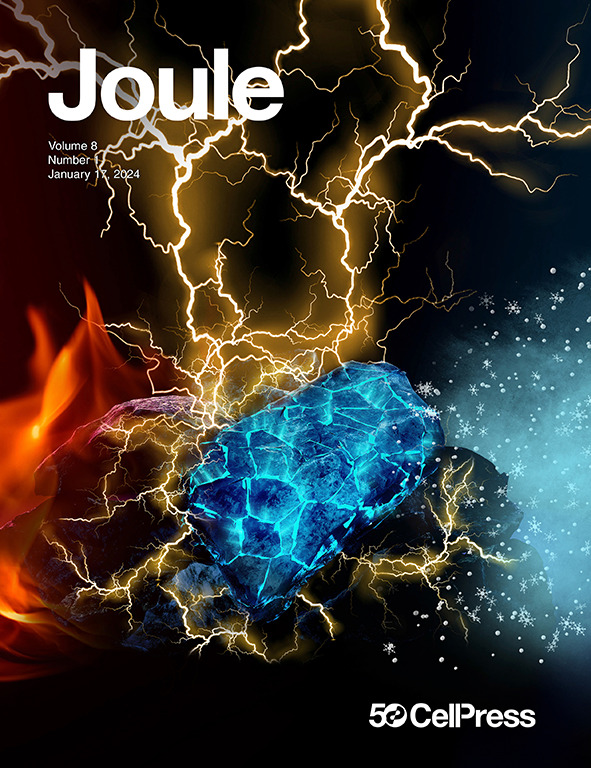1秒内批量诊断电池
IF 35.4
1区 材料科学
Q1 CHEMISTRY, PHYSICAL
引用次数: 0
摘要
随着对可扩展和可持续能源存储的需求不断增长,迫切需要快速和负担得起的诊断,特别是工厂级的电池分选和二次寿命评估。电化学阻抗谱(EIS)是一种应用广泛的方法,但由于其速度慢、复杂和成本高而无法大规模应用。这项工作介绍了一种多通道和多频率电激励响应(MMER)技术,该技术以很少的时间和成本捕获与阻抗相关的信息。无论电池数量如何,MMER都可以在1秒内诊断出整个电池模块。它采用二进制多频激励信号,在可编程逻辑器件等简单硬件上实现。与EIS不同,MMER避免了频域变换和阻抗拟合。相反,它比较了共享激励电流下的原始电压响应,以揭示性能变化。实验表明,MMER可以根据EIS跟踪细胞健康状况,同时将测试时间缩短99%以上。它支持实时诊断,即使在高速循环和扩展到其他电化学系统。本文章由计算机程序翻译,如有差异,请以英文原文为准。


Batch diagnosis of batteries within one second
As demand grows for scalable and sustainable energy storage, fast and affordable diagnostics are urgently needed, especially for factory-level cell sorting and second-life assessments. Electrochemical impedance spectroscopy (EIS) is widely used but remains too slow, complex, and costly for large-scale use. This work introduces a multi-channel and multi-frequency electrical excitation response (MMER) technique that captures comparable impedance-related information at a fraction of the time and cost. MMER can diagnose entire battery modules in 1 s, regardless of cell count. It uses a binary multi-frequency excitation signal, implemented on simple hardware such as programmable logic devices. Unlike EIS, MMER avoids frequency-domain transformation and impedance fitting. Instead, it compares raw voltage responses under a shared excitation current to reveal performance variations. Experiments show MMER tracks cell health in line with EIS while reducing test time by over 99%. It supports real-time diagnostics even during high-rate cycling and extends to other electrochemical systems.
求助全文
通过发布文献求助,成功后即可免费获取论文全文。
去求助
来源期刊

Joule
Energy-General Energy
CiteScore
53.10
自引率
2.00%
发文量
198
期刊介绍:
Joule is a sister journal to Cell that focuses on research, analysis, and ideas related to sustainable energy. It aims to address the global challenge of the need for more sustainable energy solutions. Joule is a forward-looking journal that bridges disciplines and scales of energy research. It connects researchers and analysts working on scientific, technical, economic, policy, and social challenges related to sustainable energy. The journal covers a wide range of energy research, from fundamental laboratory studies on energy conversion and storage to global-level analysis. Joule aims to highlight and amplify the implications, challenges, and opportunities of novel energy research for different groups in the field.
 求助内容:
求助内容: 应助结果提醒方式:
应助结果提醒方式:


